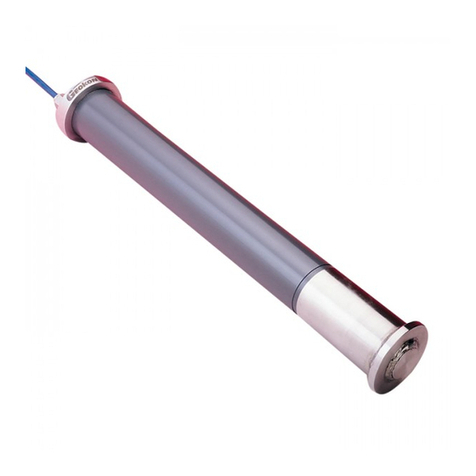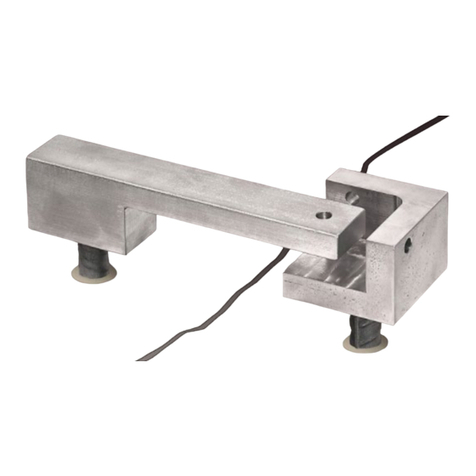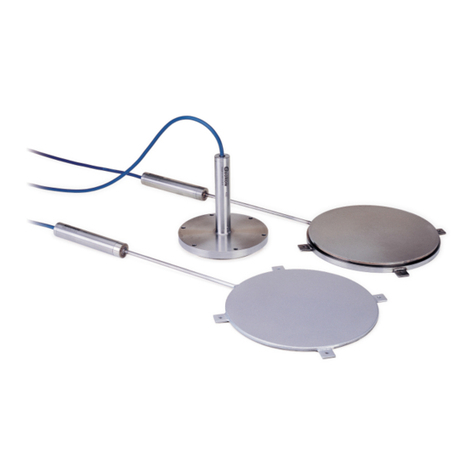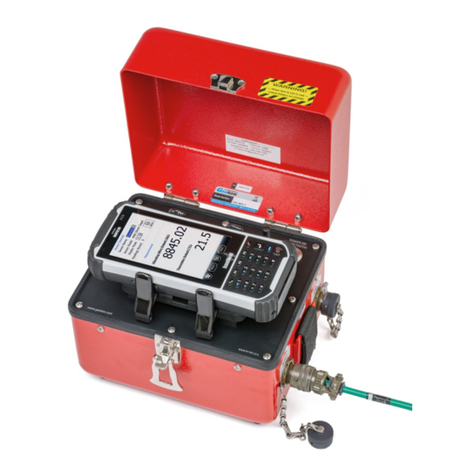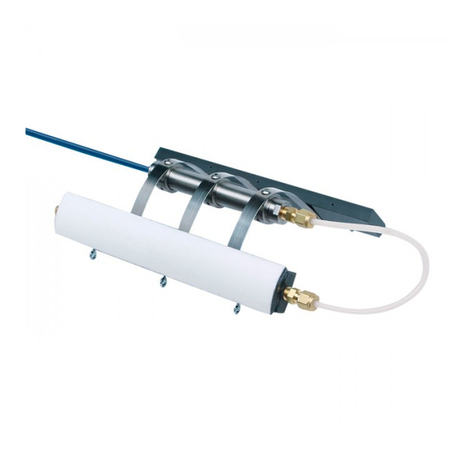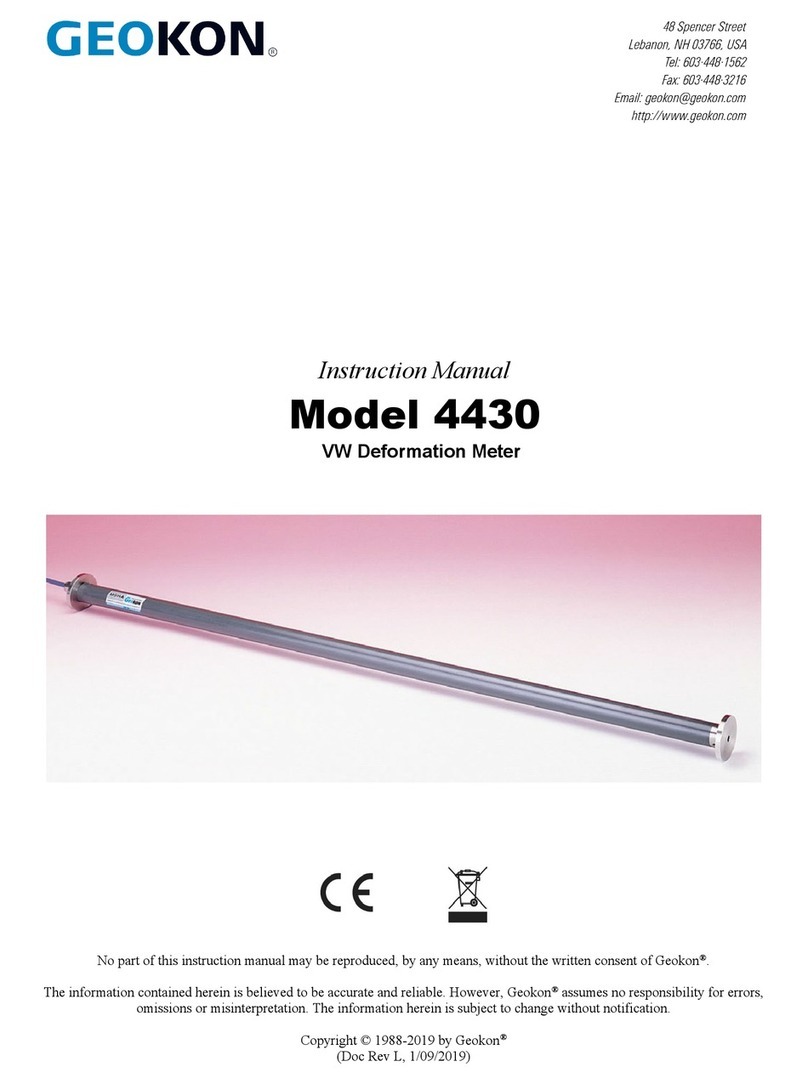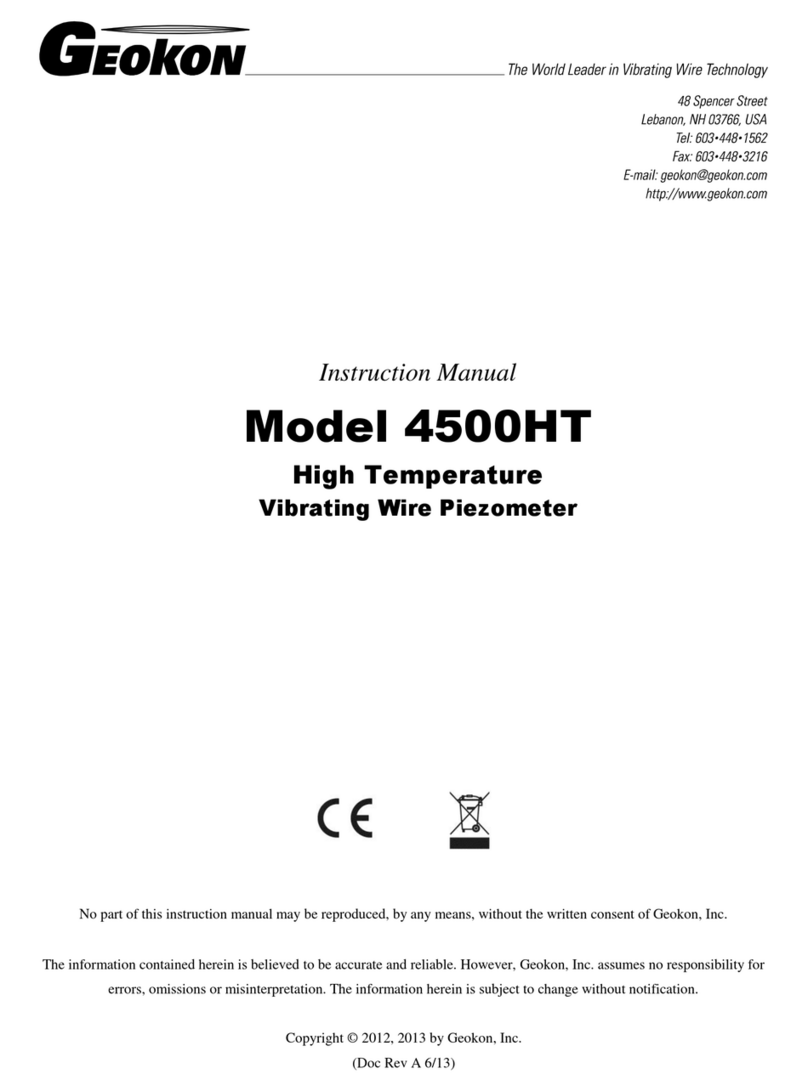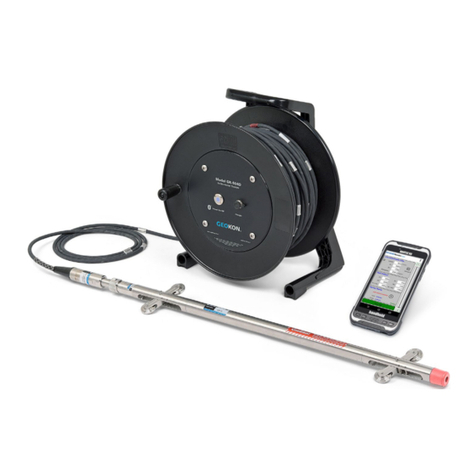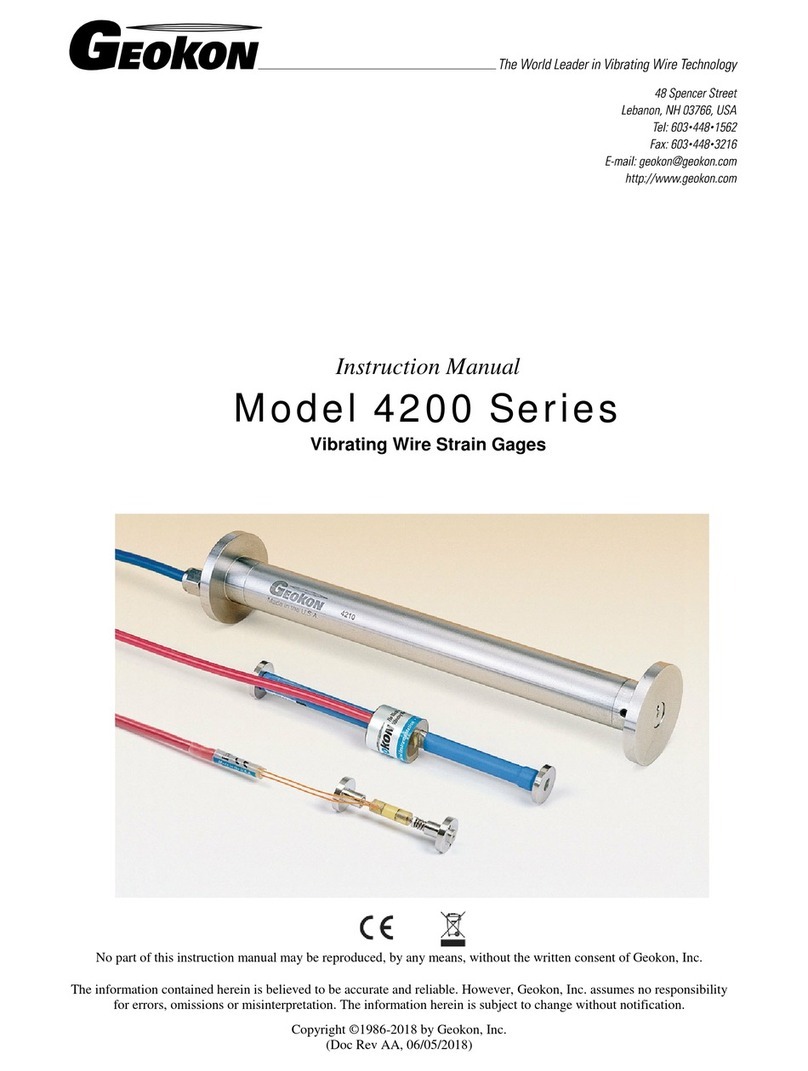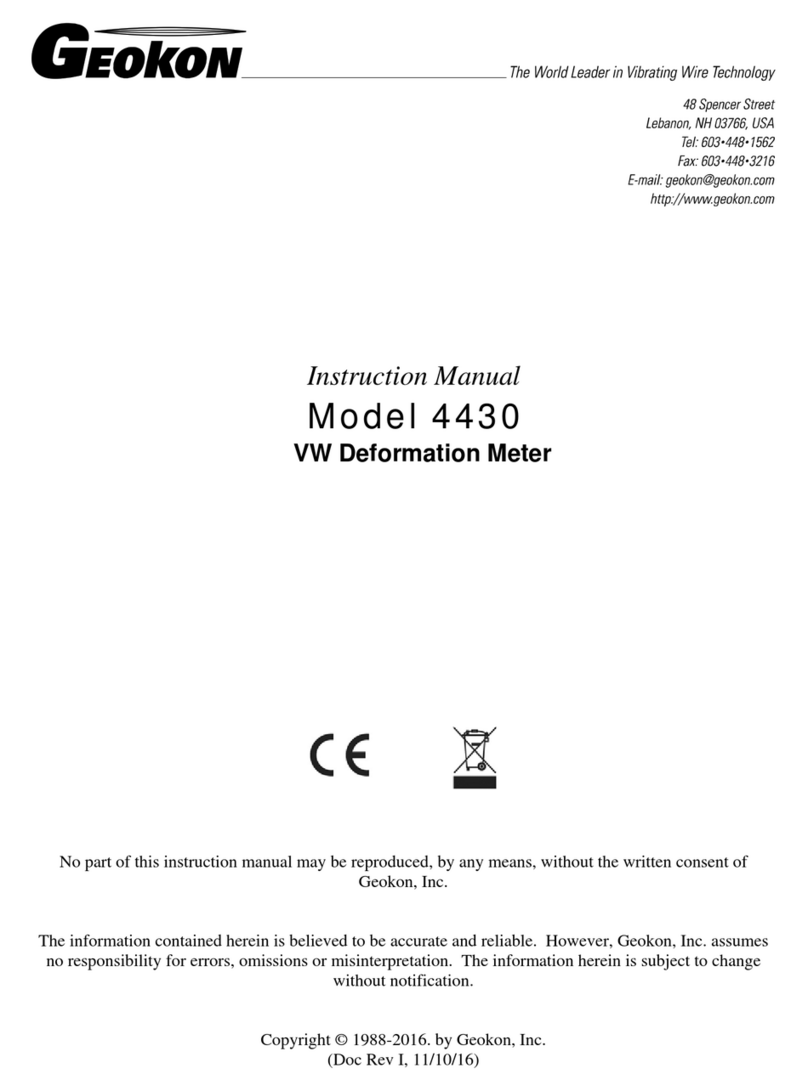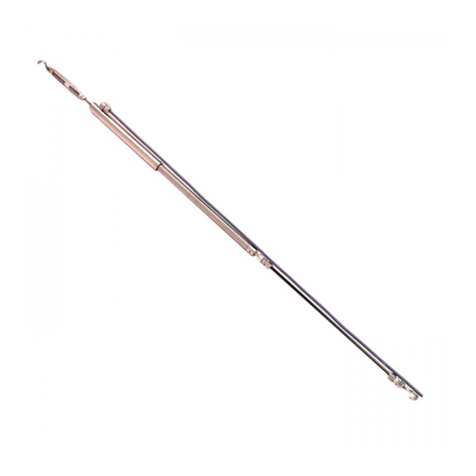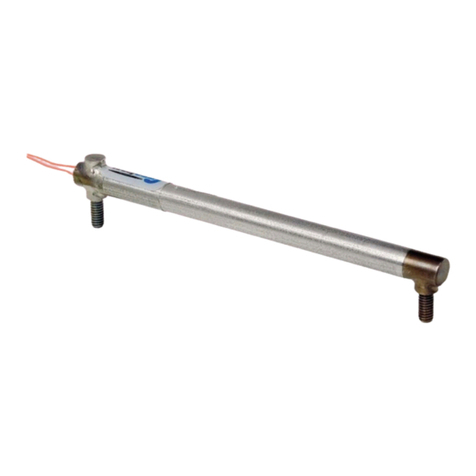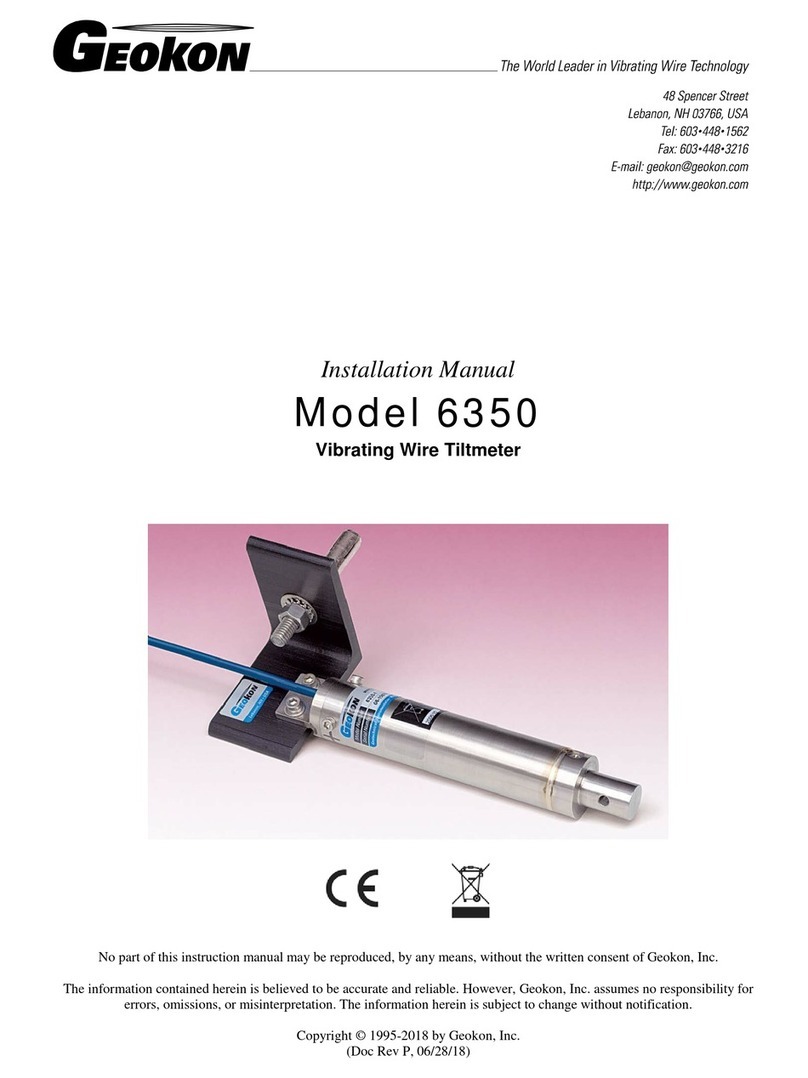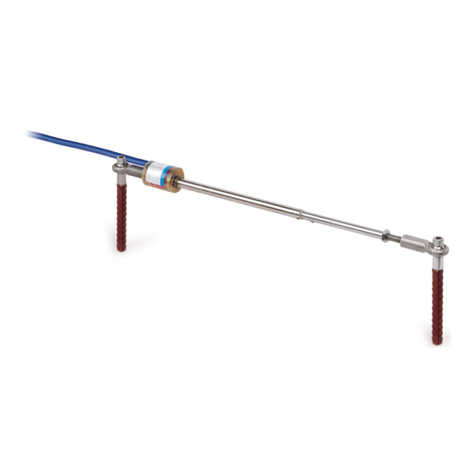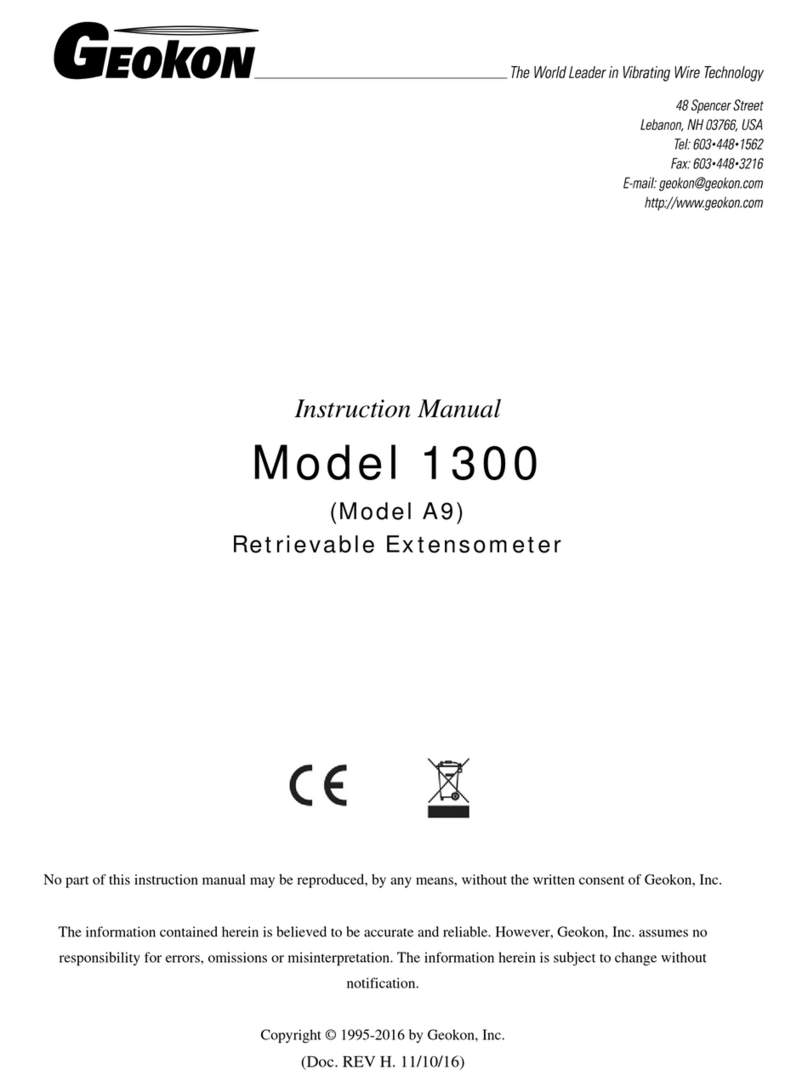
2.4 Cable Installation and Splicing
The cable should be routed to minimize the possibility of damage due to moving equipment,
debris or other causes. The cable can be protected by the use of flexible conduit, which can be
supplied by Geokon.
Terminal boxes with sealed cable entries are available from Geokon for all types of applications.
These allow many gages to be terminated at one location with complete protection of the lead
wires. The interior panel of the terminal box can have built-in jacks or a single connection with a
rotary position selector switch. Contact Geokon for specific application information.
Because the vibrating wire output signal is a frequency rather than a current or voltage,
variations in cable resistance have little effect on gage readings; therefore, splicing of cables has
no ill effects, and in some cases may in fact be beneficial. The cable used for making splices
should be a high quality twisted pair type, with 100% shielding and an integral shield drain wire.
When splicing, it is very important that the shield drain wires be spliced together. Always
maintain polarity by connecting color to color.
Splice kits recommended by Geokon incorporate casts, which are placed around the splice and
are then filled with epoxy to waterproof the connections. When properly made, this type of splice
is equal or superior to the cable in strength and electrical properties. Contact Geokon for splicing
materials and additional cable splicing instructions.
Cables may be terminated by stripping and tinning the individual conductors and then connecting
them to the patch cord of a readout box. Alternatively, a connector may be used which will plug
directly into the readout box or to a receptacle on a special patch cord.
2.5 Lightning Protection
The Model 4410 Vibrating Wire Strandmeter, unlike numerous other types of instrumentation
available from Geokon does not have any integral lightning protection components, i.e.
transzorbs or plasma surge arrestors. Usually this is not a problem however, if the instrument
cable is exposed, it may be appropriate to install lightning protection components, as the
transient could travel down the cable to the gage and possibly destroy it.
Note the following suggestions:
•If the gage is connected to a terminal box or multiplexer components such as plasma surge
arrestors (spark gaps) may be installed in the terminal box/multiplexer to provide a measure
of transient protection. Terminal boxes and multiplexers available from Geokon provide
locations for installation of these components.
•Lighting arrestor boards and enclosures are available from Geokon that install near the
instrument. The enclosure has a removable top. In the event the protection board (LAB-3) is
damaged, the user may service the components (or replace the board). A connection is made
between this enclosure and earth ground to facilitate the passing of transients away from the
gage. See Figure 4. Consult the factory for additional information on these or alternate
lightning protection schemes.
